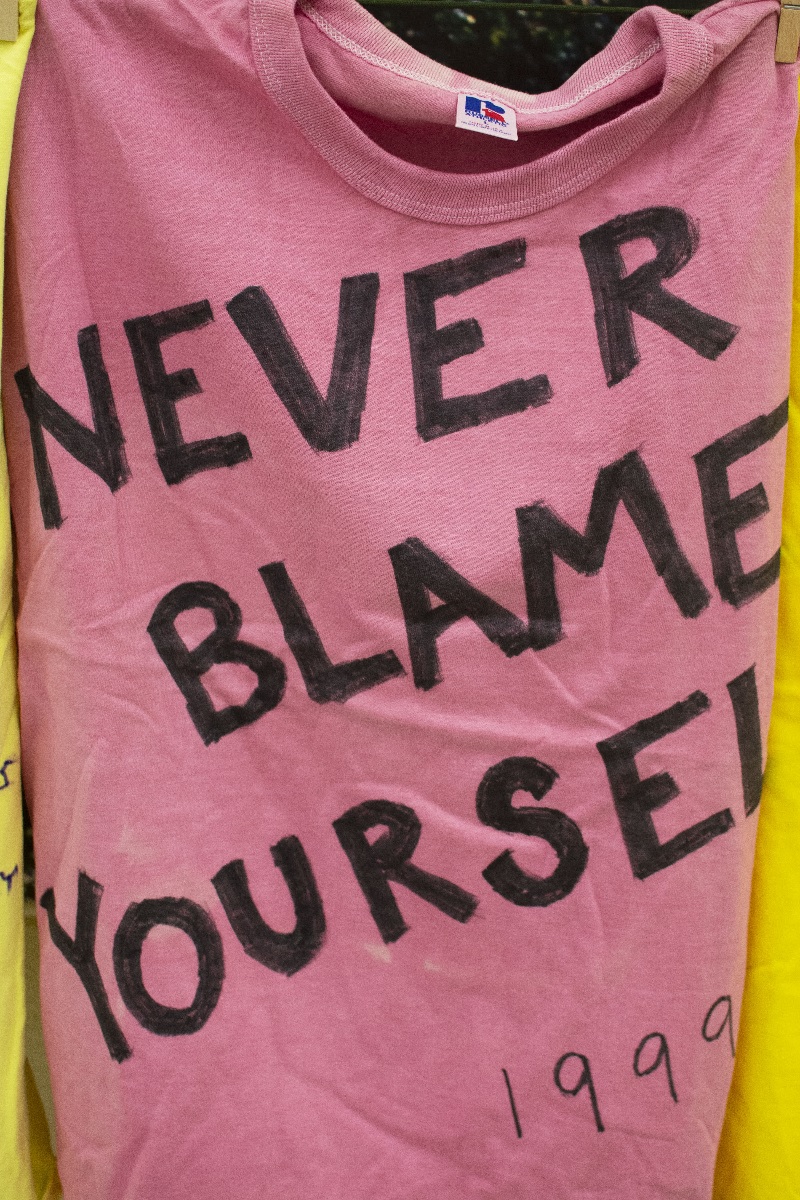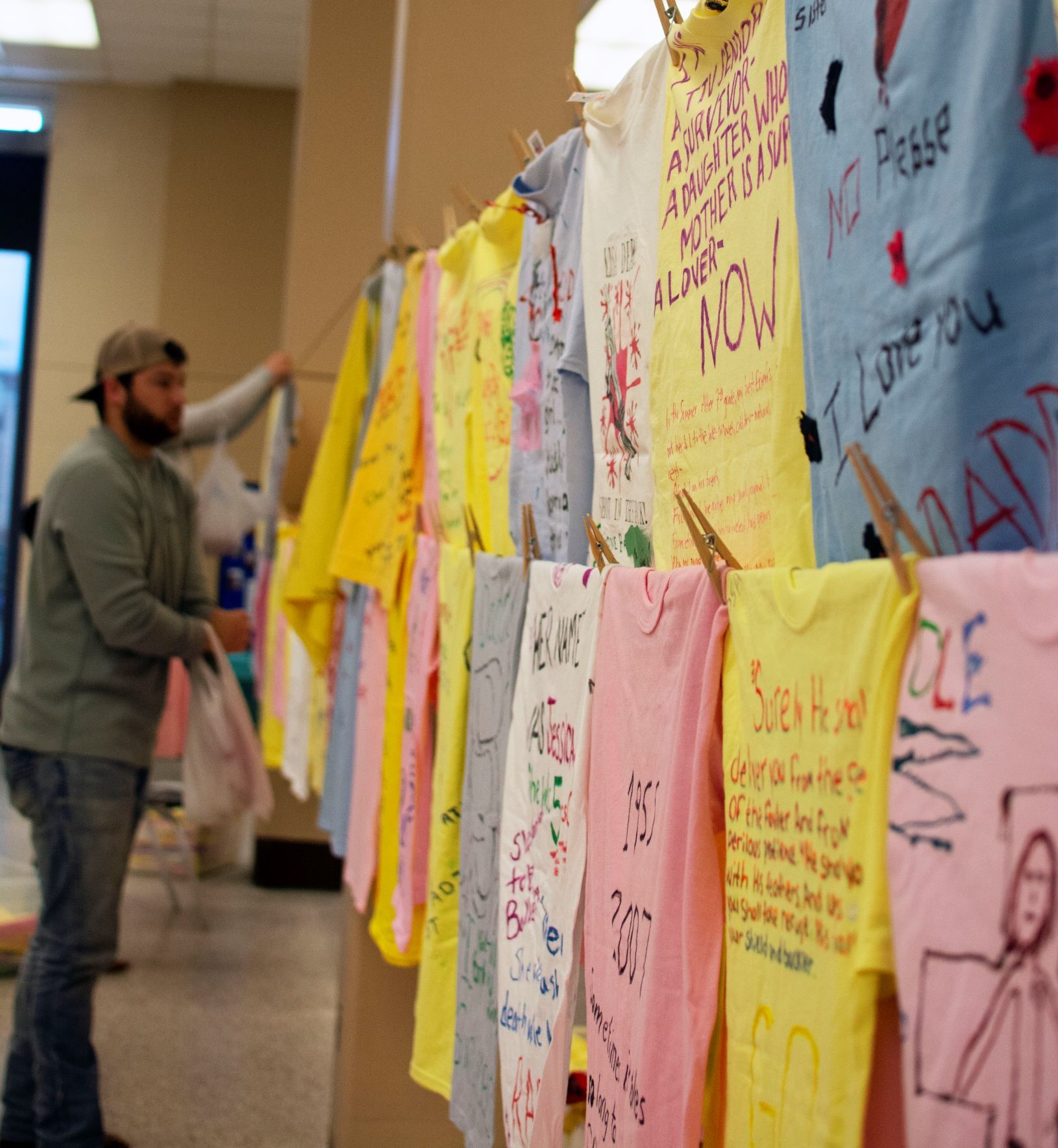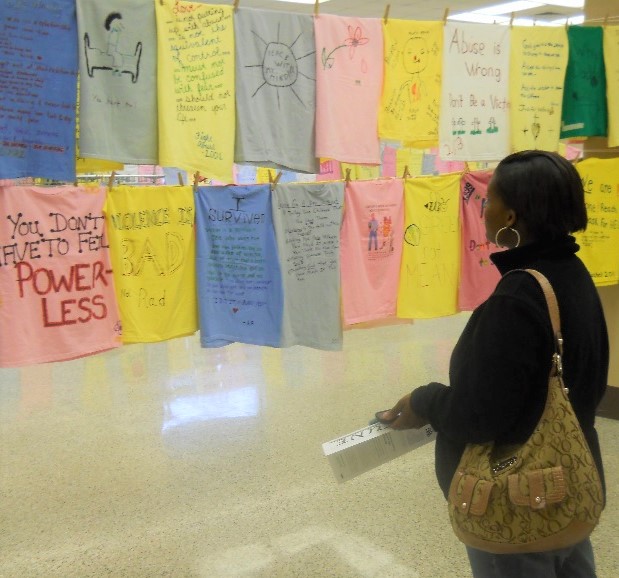 The Clothesline Project
The Clothesline Project
Every April, during Sexual Assault Awareness Month, the Gretta Stanger Center participates in the Clothesline Project. This event is open to everyone.
The Clothesline Project is an event, created to bring awareness to the issue of violence. For those who have been affected by violence, it is a means of expressing their emotions by decorating a t-shirt.
What is The Clothesline Project?

The Clothesline Project displays handmade shirts bearing witness to interpersonal violence in our community. Each shirt is decorated to represent a particular survivor's experience. The Clothesline Project started with thirty-one shirts hung in Hyannis, Massachusetts in 1990 to call attention to violence against women. Since then, thousands of projects have been started in communities worldwide. The Tennessee Tech Gretta Stanger Center has been involved since 1998 and has always welcomed participation from all people. We display our collection every April during Sexual Assault Awareness Month.
Those affected by interpersonal violence can visit the Gretta Stanger Center during office hours to leave a shirt for the display or to make one in a supportive environment.
Goals of The Clothesline Project
The Clothesline Project aims to
- Bear witness to survivors and victims of interpersonal violence.
- Help with the healing process of survivors or those who have lost a loved one to interpersonal violence.
- Educate, document, and raise awareness of the extent of interpersonal violence in our community.
- Provide a nationwide network of support, encouragement, and information for other communities starting their own Clothesline Projects.

How to Participate
- What goes on the Clothesline?
Shirts made by people affected by interpersonal violence.
- WHITE represents those who have died because of interpersonal violence
- YELLOW or BEIGE represent those assaulted by an intimate partner or family member
- RED, PINK, or ORANGE are for survivors of rape and sexual assault
- BLUE or GREEN shirts represent survivors of incest or child sexual abuse
- PURPLE or LAVENDER represents people attacked because of their sexual orientation or gender identity
These colors are not mandatory if a different color or pattern has special significance. People draw, paint, print, or embroider their messages on the shirts to create moving, personal tributes.
- Creating a Shirt
People are welcome to make shirts at home and bring them to the Gretta Stanger Center or to make a shirt here. We have shirts of many colors and sizes that anyone can decorate. You may include your first name and date, but it is not required. Some suggestions for durability:
- use a natural fabric
- sew rather than using glue
- photocopy photographs onto iron-ons
- use acrylic or textile paint, color-fast dye or indelible ink. No puff paints or glitter please.
At each display, shirts and materials will be available for people who wish to design a shirt at the time.
For survivors:
Making a shirt can be part of the healing process for survivors of interpersonal violence, so let us know if you would like to have support at hand when making your shirt. We respect requests for confidentiality.
For those killed:
You may want to submit a shirt that belonged to a victim. You can include the person's name, date of birth and death, and hometown on the shirt. When the shirt is complete you may wish to take the time to write a description of the person you have memorialized.
Include any information you wish to share about their death. You might tell us what this person meant to you and how you think they should be remembered. You can enclose a photograph of the person if you have a copy you are willing to part with (we cannot be responsible for returning photographs or mementos.)
Names:
Naming the perpetrator is an important part of the healing process. But, for legal reasons, we cannot display shirts with full names of the perpetrators. We ask that shirt makers use first names or initials if they would like to refer to a perpetrator with a name.
- How to see the Clothesline
The Gretta Stanger Center creates a display each April in the RUC. See our Current Events page for details on this year's display.
Check out a virtual display from April 2020 here.
Visit the Tennessee Tech archives with the link below to view a full gallery of all clothesline shirts we have collected over the years.

